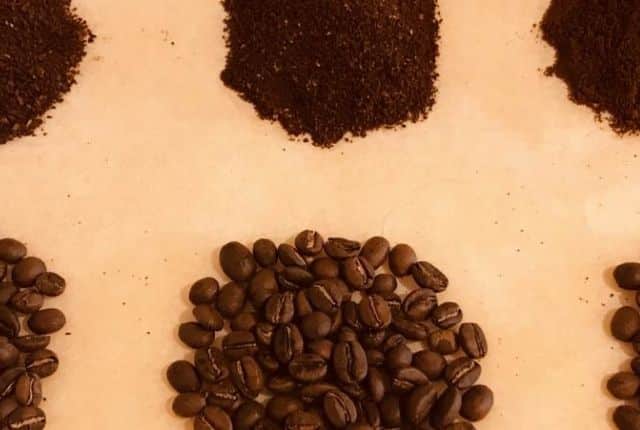
Trained baristas know the importance of selecting the right grind size for different brewing methods. In fact, most coffee shops regularly recalibrate their grinders throughout the day to keep drinks consistent.
But if you’ve been brewing coffee at home, you might not have considered why grind size is important. This is likely to be the case if you purchase pre-ground coffee, which is sometimes marketed as being suited for any brewing method or coffee machine.
To demonstrate how different grind sizes affected a single brewing method, we conducted an experiment with a Hario V60 dripper. We used several different grind sizes and measured how that affected the flow rate, water retention, and extraction yield for our brew.

WHY IS USING THE RIGHT GRIND SIZE SO IMPORTANT?
Coffee beans are roasted to develop their full aromatic and flavour potential. To efficiently release these flavours and aromas into a drink, the beans must be ground. By grinding the coffee, we increase its surface area and allow for optimum extraction.
If the coffee grounds are too coarse for the brew method, they will under-extract and taste sour or salty. If the coffee is too fine for your chosen brewing method, it will over-extract and taste bitter.
Espresso, for example, is usually made with finely ground coffee, as it will typically only be extracted for 20 to 30 seconds under high pressure. The fine size of the grinds means that more of the coffee will extract in a much shorter timeframe.
Conversely, when coffee is made in a French press, the grinds are immersed in water for several minutes. To make sure the coffee doesn’t over-extract over a longer period of time, use a coarser grind.
The Experiment
To demonstrate the importance of using the right grind size, we brewed a single origin Colombia Rio Magdalena at three different grind settings to compare. We used an espresso grind (1.5 grind setting), filter grind (4.5), and French press/cafetiere grind (7.5). The 4.5 setting was the one we would normally use for a pour over dripper.
To ensure our results were objective, we set up a number of different brews, using a brew ratio of 6.5%. This means for every 100g of water, we used 6.5g of coffee.
We also used a range of seven different dry coffee masses for each grind size. We then recorded the average water retention, flow rate, and extraction yield for each of the three grind sizes.
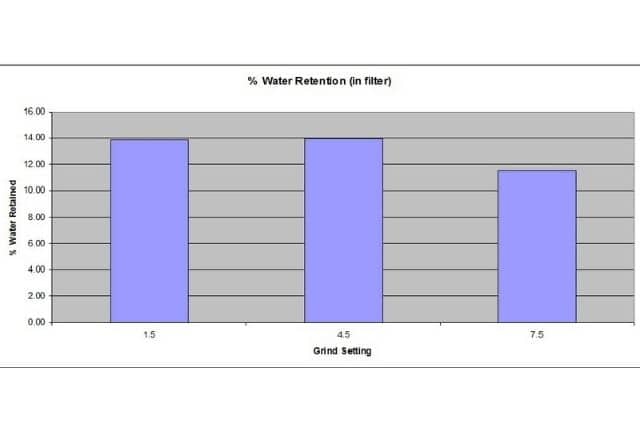
How average water retention compared across the different grind sizes
For each brew, we weighed the amount of water used and the mass of wet coffee left after the brew. This allowed us to calculate the amount of water left in the grinds.
As the chart shows, the difference between average water retention for both the espresso (1.5) and filter (4.5) grind sizes was minimal: both were close to 14%. Average water retention for the French press (7.5) grind size, however, was noticeably lower at 11.6%.
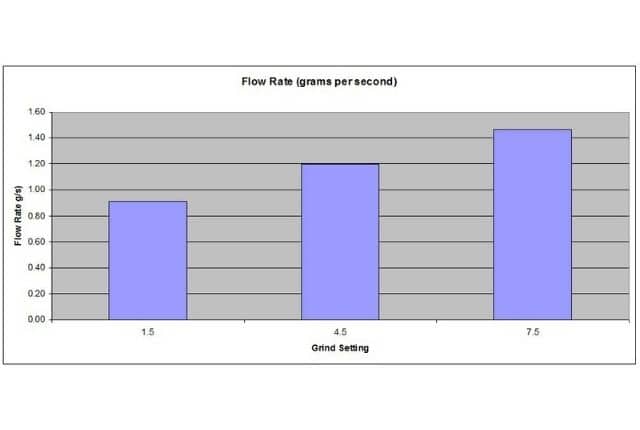
How flow rate changed according to grind size
We know that different grind settings result in different flow rates. Water flows more quickly through coffee when it is more coarse, as the larger size of the grounds means there is more space between them.
To calculate an average flow rate, we divided the mass of wet coffee left in the dripper by the brew time. We measured this in grams per second (g/s). As expected, the espresso grind size (1.5) had the slowest flow rate at 0.9g/s, followed by the filter size (4.5) at 1.2g/s. The coarsest grind, the French press (7.5), had the fastest flow rate at 1.5g/s.
This confirms that water flows more quickly through coarser coffee, resulting in a faster brew.
Grind Size And Extraction Yield
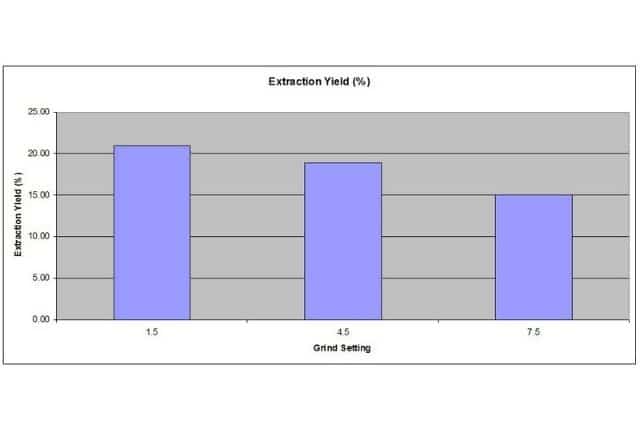
How extraction yields changed according to grind size
Extraction yield is a measure of the percentage of dry coffee that is dissolved during brewing. To calculate the average extraction yield for each brew, we determined the total dissolved solids (TDS) in the leftover wet coffee grinds using a refractometer.
Average extraction yield percentages for the espresso, filter, and French press grind settings were 21%, 18.8%, and 15% respectively.
At the coarsest setting, the coffee was under-extracted and tasted watery and sour. Conversely, at the finest setting, the coffee was over-extracted and bitter.
What Does This Tell Us?
While this experiment did provide us with a great recipe for making consistent pour over coffee, it also illustrated what many of us already know: there is no such thing as one grind that fits all brewing methods.
If you’re buying pre-ground coffee that claims to work perfectly with any brewing method, that’s incorrect. While it might not produce an undrinkable cup of coffee, you will get better results if you grind coffee with a specific brewing method in mind.
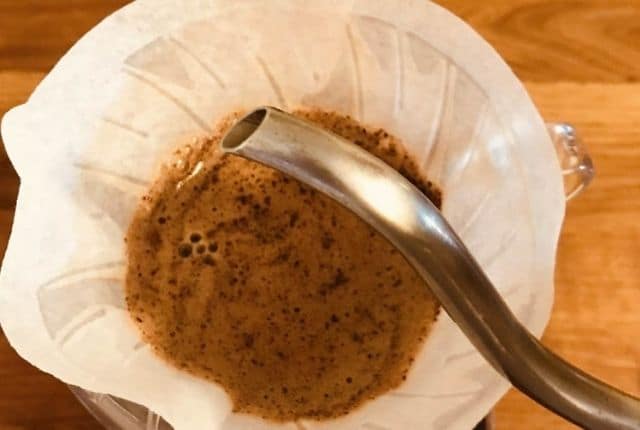
Grind too coarsely for your chosen brewing method, and your coffee will under-extract; grind too fine, and it will over-extract. There are no exceptions to this rule. Grind size is an incredibly important variable when it comes to brewing coffee, whether you’re at home or behind the bar at a café.
So next time you reach for your brewer, ask yourself if you’re really grinding your coffee to the right size. It’s likely that if you’re using pre-ground coffee, you might have better results with a different grind size or brewing method.
Original article made by : The perfect daily grind
